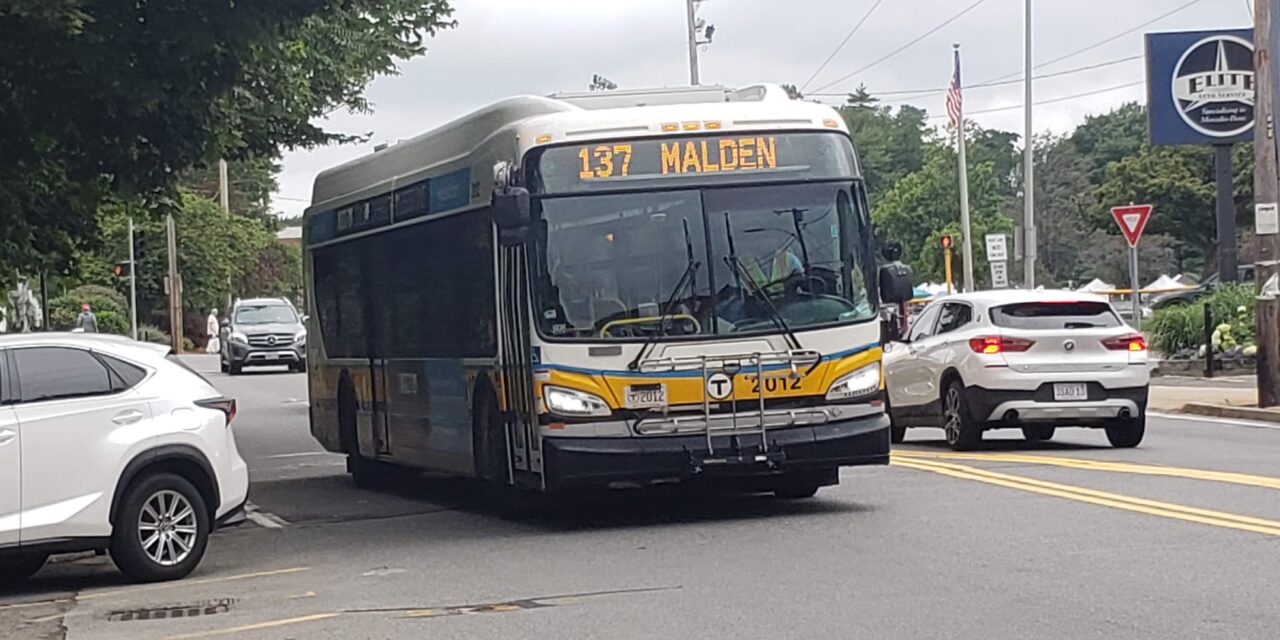THINKING BEYOND conventional MBTA service, town seeks to expand transportation options with “Micro Transit” and “Transportation Demand Management” concepts. (Frank Conte Photo)
By MARK SARDELLA
WAKEFIELD — The Town Council heard this week about several concepts related to transportation.
Town Administrator Stephen P. Maio introduced the ideas of a Transit Advisory Committee, “Micro Transit” and “Transportation Demand Management.”
He asked the Town Council to think of a Transit Advisory Committee as a panel that would work on transportation issues with groups like the Safe Streets Working Group, the Chamber of Commerce, Youth Action Teams, the School Department, the Council on Aging, the Disability Council and the Traffic Advisory Committee.
Maio said that Stoneham has a Transit Advisory Committee, which started as a grass roots group seeking to bring more MBTA service to that town.
He described “Micro Transit” as a system of vehicles for hire (or subsidized) featuring flexible routes, flexible scheduling and shared routes.
“Transportation Demand Management,” Maio said, is a defined set of strategies aimed at maximizing traveler choices including commuter/residential ridesharing and planning, reducing trip generation rates and parking needs and increasing multi-modalism in transportation plans.
The ultimate goal of these strategies, he explained, is to shift away from single occupancy vehicles and expand alternative modes of transportation including: public transit, carpooling, vanpooling, ridesharing, walking and cycling.
TDM strategies are employed to encourage broader engagement with transportation alternatives and guide residents to use them more, Maio added.
He identified a number of Benefits of Traffic Demand Management, such as: conserving energy and reducing emissions; reduced wear and tear on roads and bridges; improving community health and fitness levels; achieving equity; enhanced quality of life in walkable, bikeable communities; solving parking problems; enhancing community safety; and making alternative transportation more affordable.
Maio pointed to several areas where Traffic Demand Management is already being implemented in Wakefield. He cited the Zoning Board of Appeals insistence that the developer of 200 Quannapowitt Parkway provide a shared shuttle from the site to MBTA stations and downtown. The Town of Wakefield Bike/Pedestrian Plan is another example, he said. The Community & Economic Development Office and the Engineering Department are working with Metropolitan Area Planning Council to look at the town’s current and future bike and pedestrian connectivity and accommodations to encourage more biking, walking and rolling, Maio added. Micro transit opportunities have also been highlighted in the Vision 2030 plans and the town’s new Master Plan.
Maio also identified future areas for expansion of TDM concepts in Wakefield.
Finally, Maio reiterated that the goal is to create a shift away from single occupancy vehicles while reducing vehicle miles travelled and carbon emissions, alleviate congestion, improve air quality, and make better use of existing transportation infrastructure (MBTA, bike lanes, etc.).
Not every member of the Town Council was on board with these concepts.
Councilor Edward Dombroski pointed out that none of the ideas are new but are more applicable to a city like Boston or Cambridge than a bedroom community like Wakefield.
“We don’t have a subway system,” Dombroski observed, adding that Wakefield residents will continue to rely on motor vehicles to get around. “It’s a nice idea that doesn’t fit here.”
Wakefield has different demands and different limitations, he maintained. “This idea that we are constantly trying to find ways to eliminate cars from people’s daily routines doesn’t make a lot of sense.”
Councilor Anne Danehy said that she saw the plan as augmenting current systems and providing alternatives. She also envisioned a very gradual rollout of these ideas.
But she also questioned the demand for these concepts. Local students don’t even take buses to school, she said, noting that most kids are driven to school by parents.
She said that all of these programs need to be very easy in order to motivate people to change their behavior.





